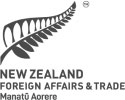Weekly Global Report:
Trade and Economic Updates
Domestic
Reserve Bank holds OCR steady
- On 9 July, the Reserve Bank of New Zealand opted to hold its Official Cash Rate steady at 3.25%, pausing what has been an 11‑month easing cycle that saw cumulative cuts of 225 basis points since August 2024. While inflation has eased to 2.5%, comfortably within the Bank’s 1-3% target range, the Monetary Policy Committee flagged that should price pressures continue to subside, another 25 basis‑point reduction could follow as soon as August. New Zealand’s cautious shift toward further easing mirrors moves by other central banks, including Canada and the European Central Bank, which have already begun cutting rates in response to slowing inflation and weakening demand. Read more here(external link).
North Asia
South Korea Showcases Cutting-Edge Robotics and AI at Unmanned System World Congress 2025
- The Unmanned System World Congress 2025, South Korea's largest exhibition of unmanned technologies, took place in Seoul between 9 – 11 July. The event showcased cutting-edge unmanned mobility innovations across defence, automotive, and space industries, with major Korean companies like Hyundai Rotem, Korea Aerospace Industries (KAI), and LIG Nex1 presenting advanced robots, drones, and air mobility systems. A key feature of the congress was a conference focused on integrating artificial intelligence with unmanned systems to advance the defence sector.
China imposes tariffs on European brandy with exceptions
- China’s Commerce Ministry has finalized a ruling to impose anti-dumping duties of up to 34.9% on brandy imports from the European Union, mainly targeting French cognac exports. These tariffs will remain in force for five years, beginning 5 July 2025, and have already triggered a significant downturn in cognac shipments to China, down nearly 70% in recent months, according to France’s national cognac agency.
- However, in an industry-wide concession, major cognac producers such as Pernod Ricard, LVMH (Hennessy), and Remy Cointreau are exempted from the duties, provided they comply with undisclosed minimum pricing commitments for their Chinese-market exports. Analysts view the exemptions as a partial win for industry leaders but a potential setback for smaller producers. Read more here.(external link)
Pacific
Ongoing non-tariff barriers to trade (NTB) identification in NZ – Fiji two-way trade relationship
- On 25 June, the Ministry of Foreign Affairs and Trade launched a survey to support the New Zealand Government in achieving Prime Minister Luxon and Prime Minister Rabuka’s goal of $2 billion in annual two-way trade between New Zealand and Fiji by 2030.
- The survey is designed to gather input from businesses that are currently trading between New Zealand and Fiji or are looking to do so. We are seeking insights to help identify practical steps MFAT can take to address non-tariff barriers and make trade between the two countries easier.
To provide your feedback, please complete our survey by 25 July: https://www.surveymonkey.com/r/VCSCTDG(external link)
If you have any questions, feel free to contact us at: NZ.Fiji.NTB.Survey@mfat.govt.nz
Americas
United States extends the implementation deadline for reciprocal tariffs
- On 7 July (EST) United States President Donald Trump signed an Executive Order extending the implementation deadline for reciprocal tariffs from 9 July to 1 August 2025. The Executive Order continues the temporary suspension of those tariffs and maintains the 10% baseline rate. Twenty-five countries (current as of midday 14 July 2025) received letters from President Trump outlining the new enforcement date and their applied tariff rate, should they fail to negotiate a deal. Changes to applied tariff rates vary, as captured in the table below. Notably, the announcement signals a 50% tariff on Brazilian imports, effective from 1 August 2025. It also increases the rates on North American trading partners Canada and Mexico to 35% and 30% respectively, although for now USMCA compliant goods are tariff-free. Brazil’s President and EU Commission President have responded with a warning of reciprocal measures if the proposed tariffs are implemented.
|
Country/entity |
2 April Reciprocal Tariff |
July Reciprocal Tariff |
|---|---|---|
| Algeria | 30% | 30% |
| Bangladesh | 37% | 35% |
| Bosnia and Herzegovina | 35% | 30% |
| Brazil | 10% | 50% |
| Brunei | 24% | 25% |
| Cambodia | 49% | 36% |
| Canada | 25% | 35% |
| European Union | 20% | 30% |
| Indonesia | 32% | 32% |
| Iraq | 39% | 30% |
| Japan | 24% | 25% |
| Kazakhstan | 27% | 25% |
| Laos | 48% | 40% |
| Libya | 31% | 30% |
| Malaysia | 24% | 25% |
| Mexico | 25% | 30% |
| Moldova | 31% | 25% |
| Myanmar (Burma) | 44% | 40% |
| Philippines | 17% | 20% |
President Trump announces a 50% tariff on copper in Truth Social post
- In a Truth Social post(external link) on 10 July (EST) United States President Donald Trump announced a new 50% tariff on copper imports into the United States effective from 1 August 2025. In the post, President Trump attributed this decision to a national security assessment. Copper is one of several industries that was subject to a Section 232 investigation launched on 25 February 2025 under the Trade Expansion Act of 1962. The investigation examines whether imports of certain goods threaten the United States’ national security. At the time of writing there is no official documentation on the White House website. Chile, the largest copper supplier to the United States, along with Mexico, another supplier, has stated that each could seek new markets to avoid the tariffs.
Conclusion of negotiations on MERCOSUR-EFTA Free Trade Agreement
- On 2 July, European Free Trade Association (EFTA) and Southern Common Market (MERCOSUR) member states announced the conclusion of negotiations on a comprehensive Free Trade Agreement between the two blocs during the MERCOSUR Summit in Buenos Aires, Argentina. According to a Joint Statement by the Signatory State Parties(external link), the agreement “will create a free-trade zone of almost 300 million people and a combined GDP of more than USD4.3 trillion. Both sides will benefit from improved market access for more than 97% of their exports, which will increase bilateral trade and translate into benefits for businesses and individuals.”
BRICS summit concludes in Rio de Janeiro, Brazil
- On 6 July, the leaders of the 11 largest emerging economies signed the Joint Declaration of the 17th BRICS Summit(external link) in Rio de Janeiro. Entitled "Strengthening Global South Cooperation for More Inclusive and Sustainable Governance", the agreement outlines 126 commitments and seals the group’s commitment to strengthening multilateralism, defending international law, and striving for a more equitable global order. The group’s declaration cites ‘serious concerns about the rise of unilateral tariff and non-tariff measures which distort trade and are inconsistent with WTO (World Trade Organisation) rules.’
United States lifts, and then suspends livestock imports from Mexico
- On 11 May, the United States suspended livestock imports from Mexico due to an outbreak of New World Screwworm. On 4 July, following Mexico’s implementation of pest control measures, the United States Department of Agriculture (USDA) announced that it would gradually lift the suspension. Mexico resumed exports to the United States on 7 July. On 10 July, the USDA announced a new 15-day suspension, citing ongoing concerns about containment efforts in Veracruz, Mexico. According to the USDA, imports will remain halted until sufficient progress is made in combatting New World Screwworm in Veracruz and other nearby Mexican states.
More reports
- Read the previous global economic round-up
Reports released this week:
A full list of global economic round-ups can be found here(external link)
If you would like to request a topic for reporting please email exports@mfat.net
External links
The following links may provide useful information to businesses:
NZTE’s website(external link) and their myNZTE(external link) provides a range of insights and tools available to support New Zealand exporters.
The Treasury releases a weekly economic update(external link) every Friday. Stats NZ has published a data portal(external link) with near real-time economic indicators.
MBIE publishes a sector reports series(external link) which provides regularly updated reports on all industry sectors that make up the New Zealand economy. These include official economic data and the challenges and opportunities that face New Zealand’s industry sectors.
Business.govt.nz(external link) provides tools and advice from across government to save small businesses’ time and help make the business a success.
MFAT has created a tariff finder(external link) which is designed to help goods exporters and importers maximise benefits from New Zealand’s Free Trade Agreements and compare tariffs in 136 other markets.
The all of government Trade Barriers(external link) website can be used to register any trade barriers experienced or issues exporting to an offshore market. Queries can be sent via the website or through the MFAT Exporter Helpline 0800 824 605. Enquiries will be sent to the government agency best placed to answer.
Tatauranga Aotearoa Stats NZ provides official data on the value of New Zealand’s exports and imports of both goods and services, by commodity type via the New Zealand Trade Dashboard(external link). This interactive dashboard is updated every quarter and allows for filtering by country and by commodity type.
Sign up for email alerts
If you would like to subscribe to this weekly update, go to our subscription page(external link) or email us at exports@mfat.net
Learn more about exporting
New Zealand Trade & Enterprise’s comprehensive market guides(external link) cover export regulations, business culture, market-entry strategies and more.
Disclaimer
This information released in this report aligns with the provisions of the Official Information Act 1982. The opinions and analysis expressed in this report are the author’s own and do not necessarily reflect the views or official policy position of the New Zealand Government. The Ministry of Foreign Affairs and Trade and the New Zealand Government take no responsibility for the accuracy of this report.
Copyright
Crown copyright ©. Website copyright statement is licensed under the Creative Commons Attribution 4.0 International licence(external link). In essence, you are free to copy, distribute and adapt the work, as long as you attribute the work to the Crown and abide by the other licence terms.

